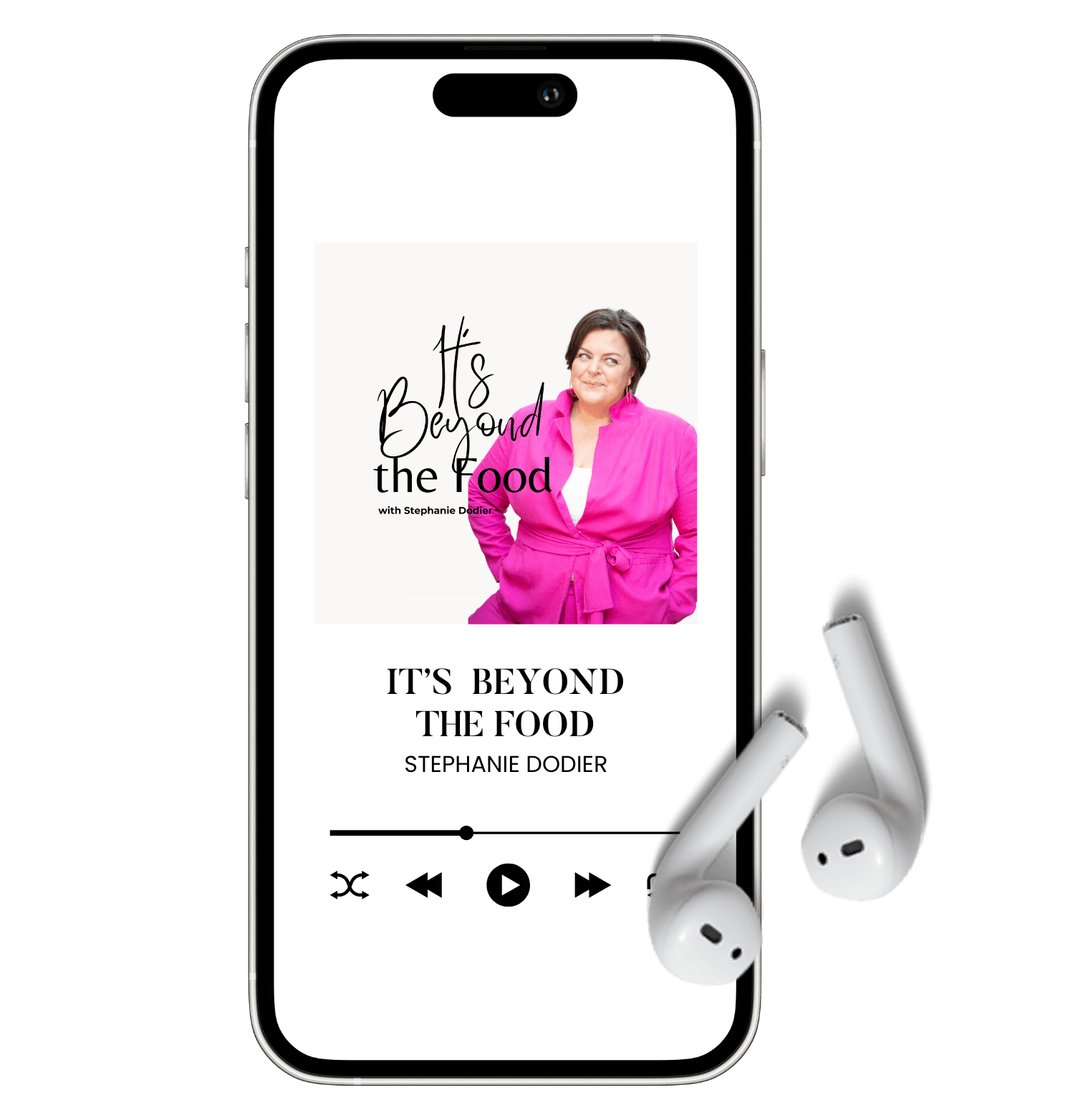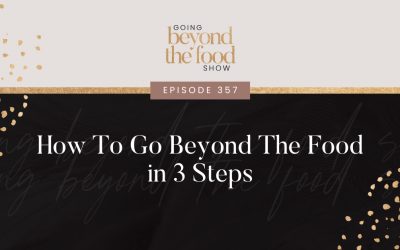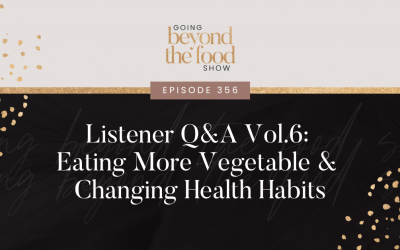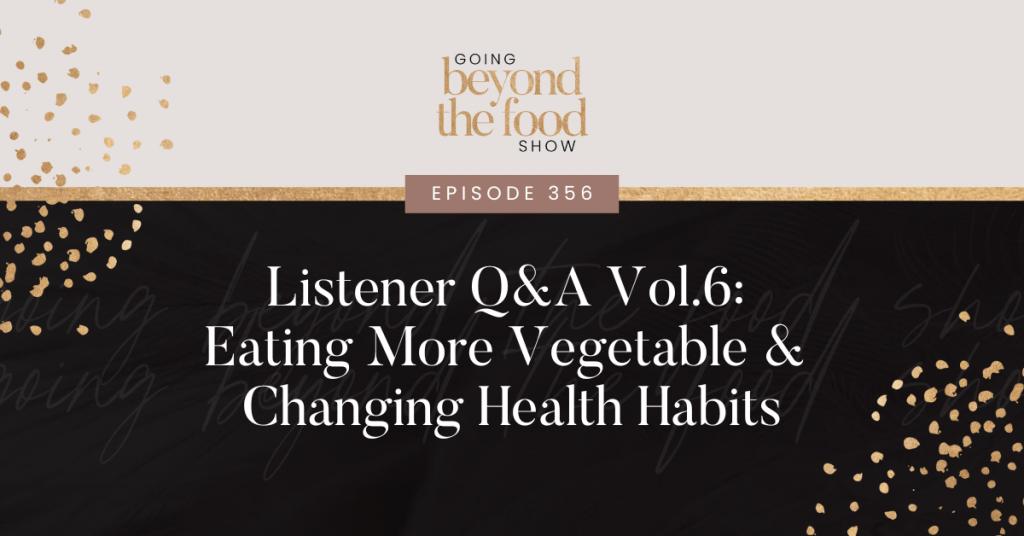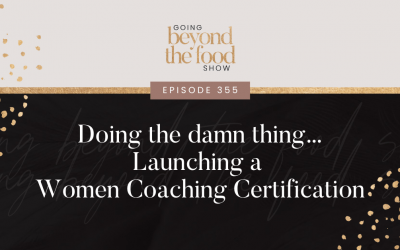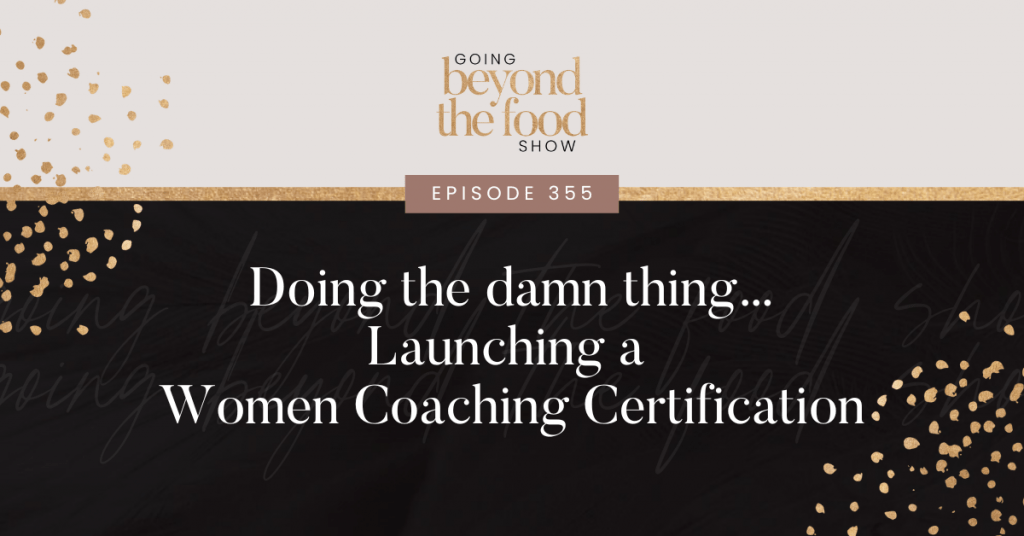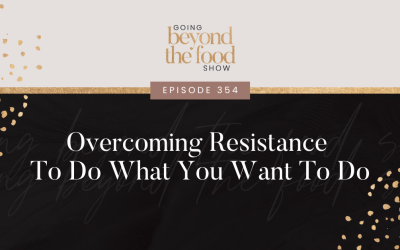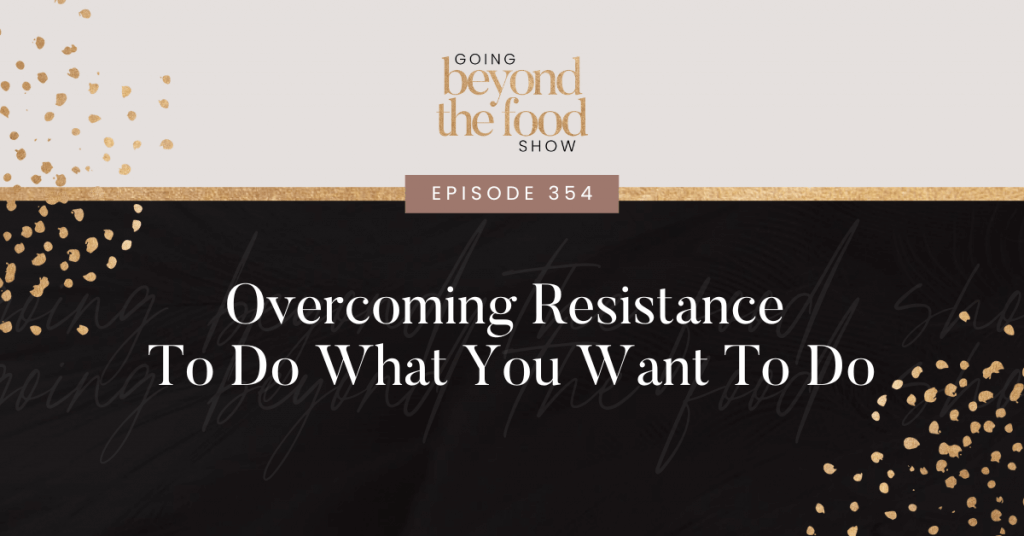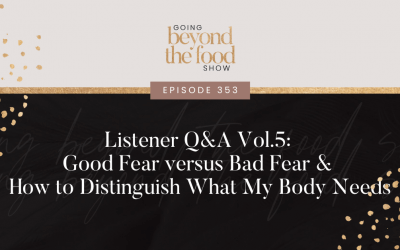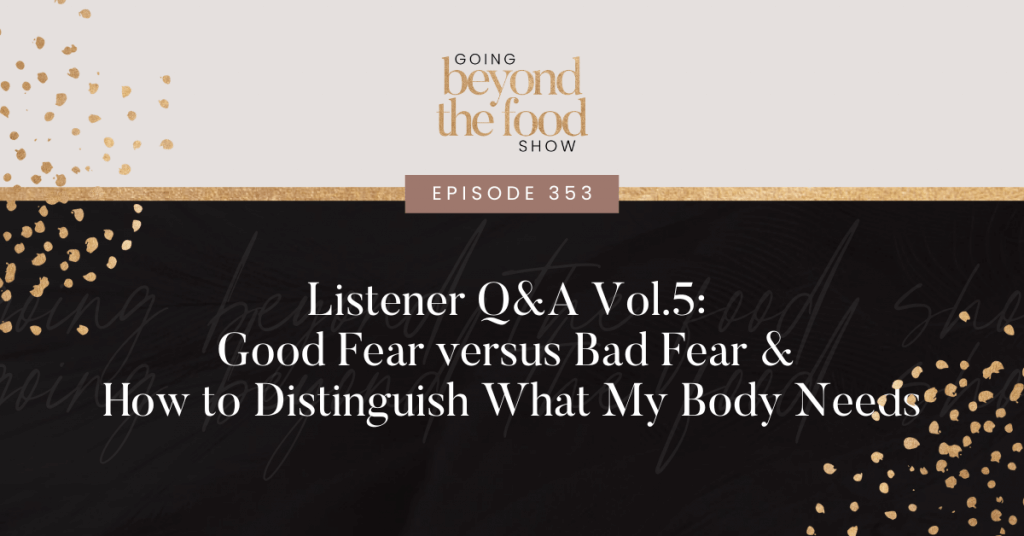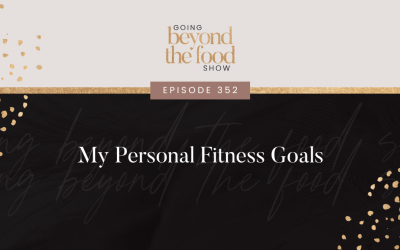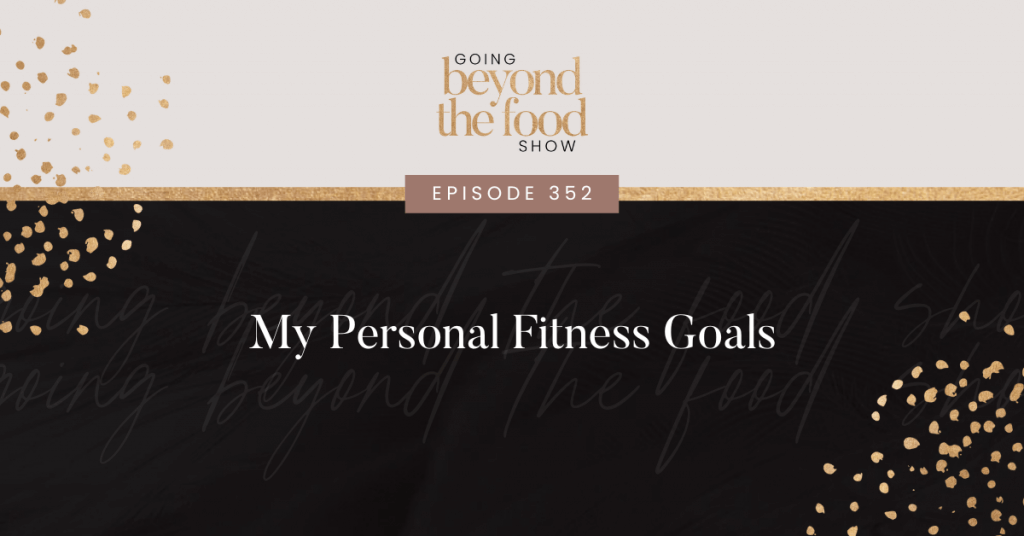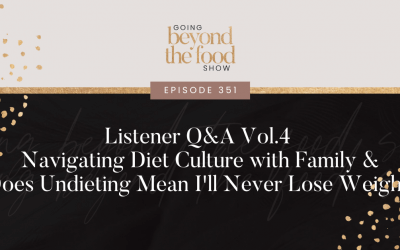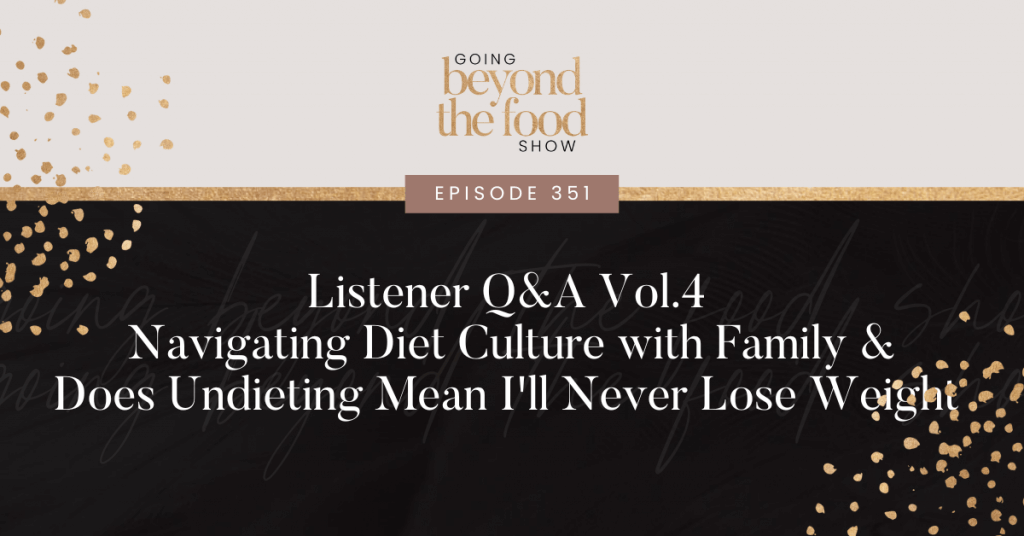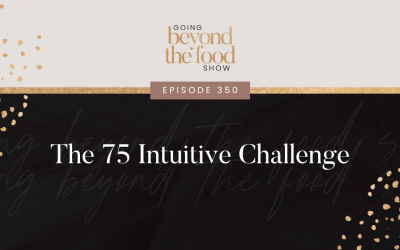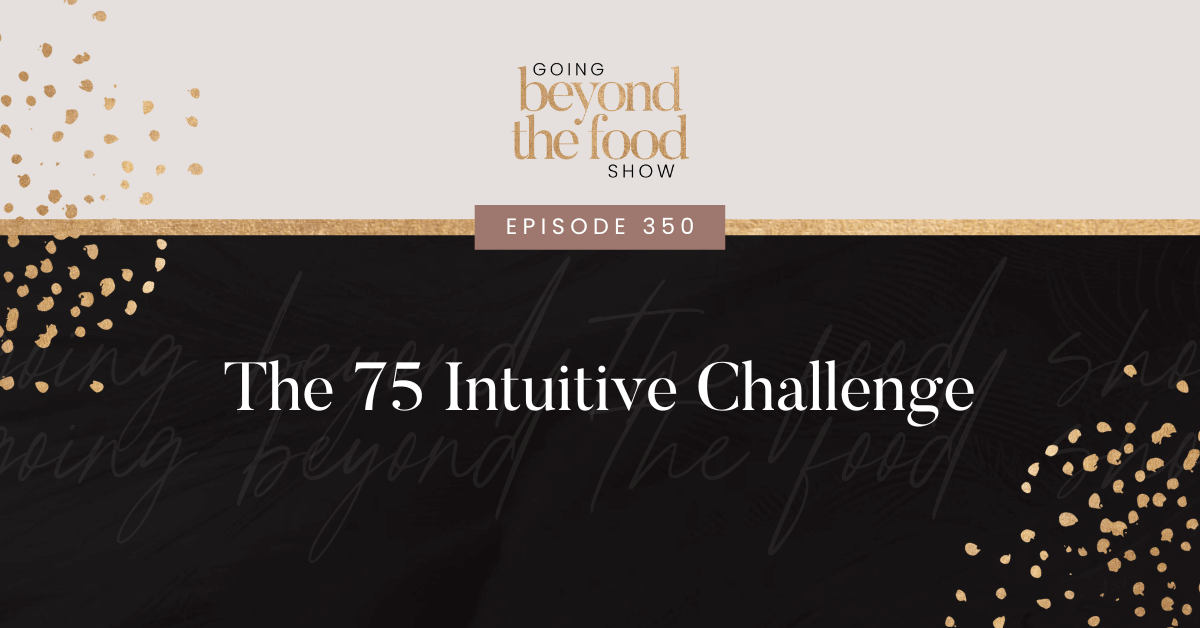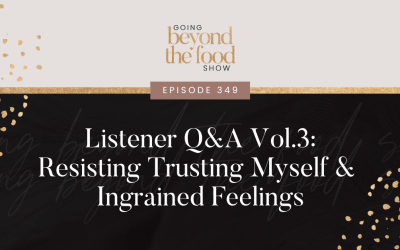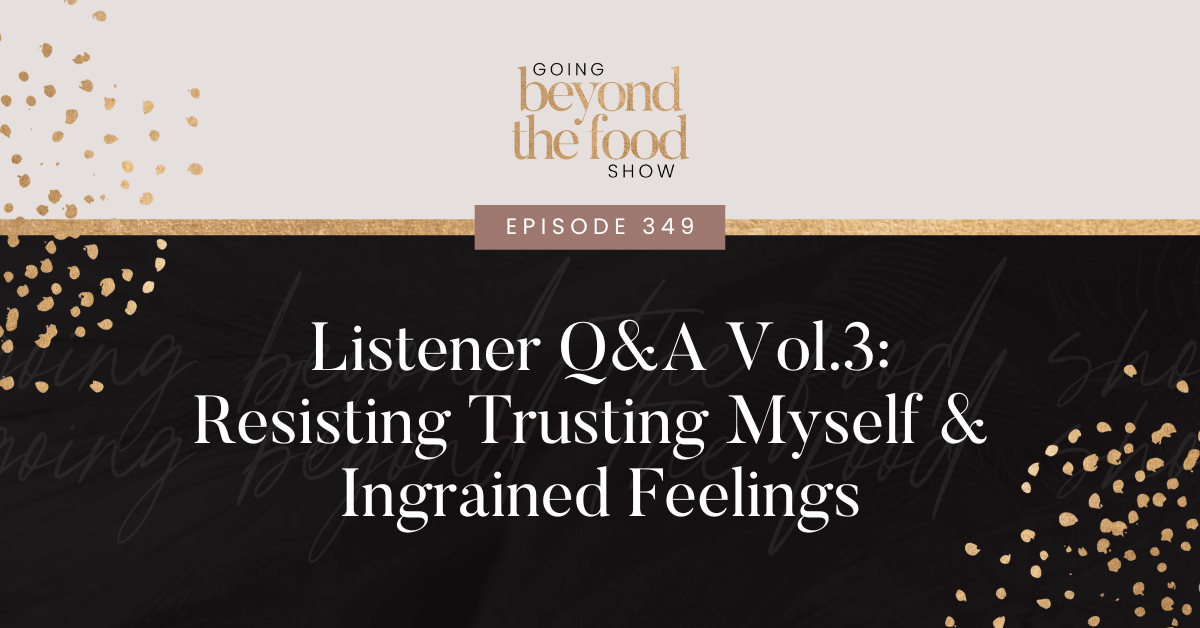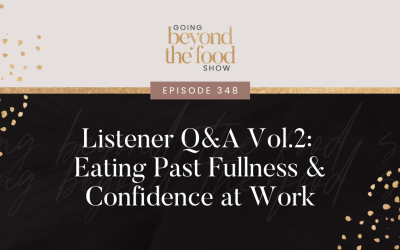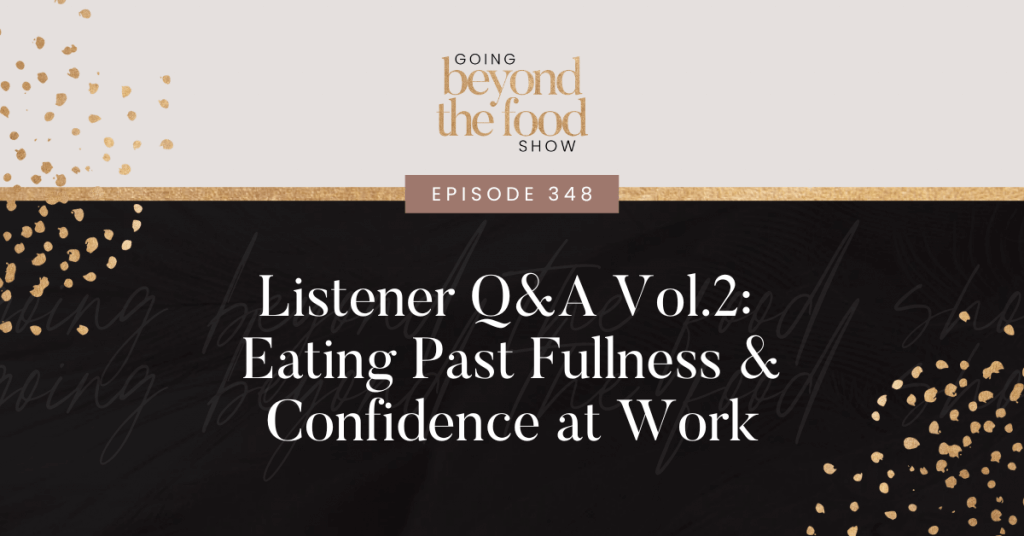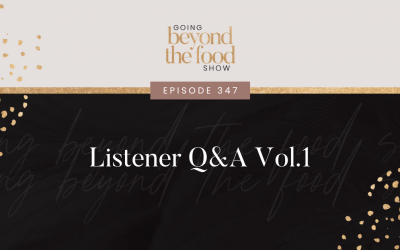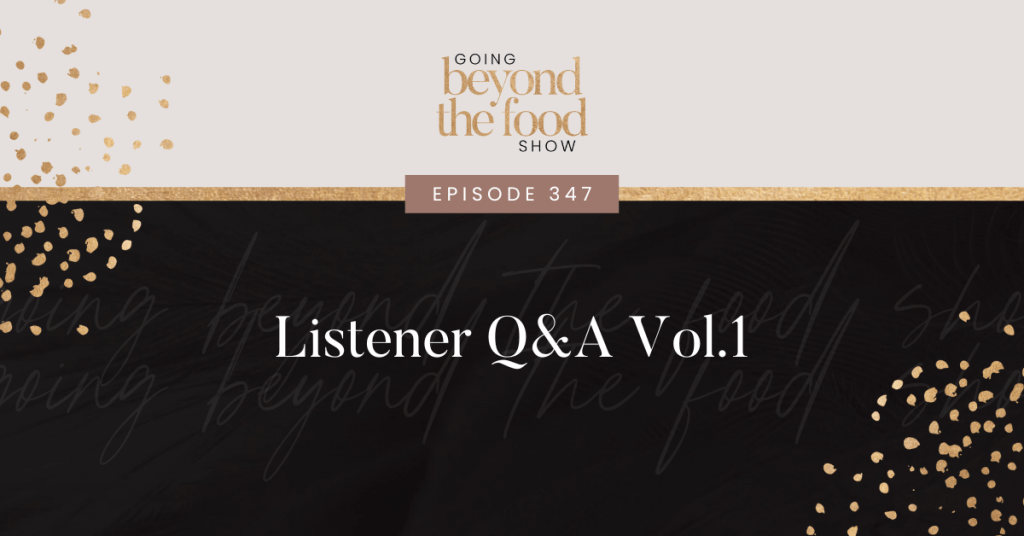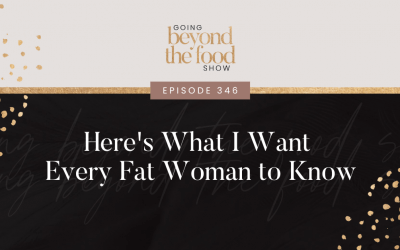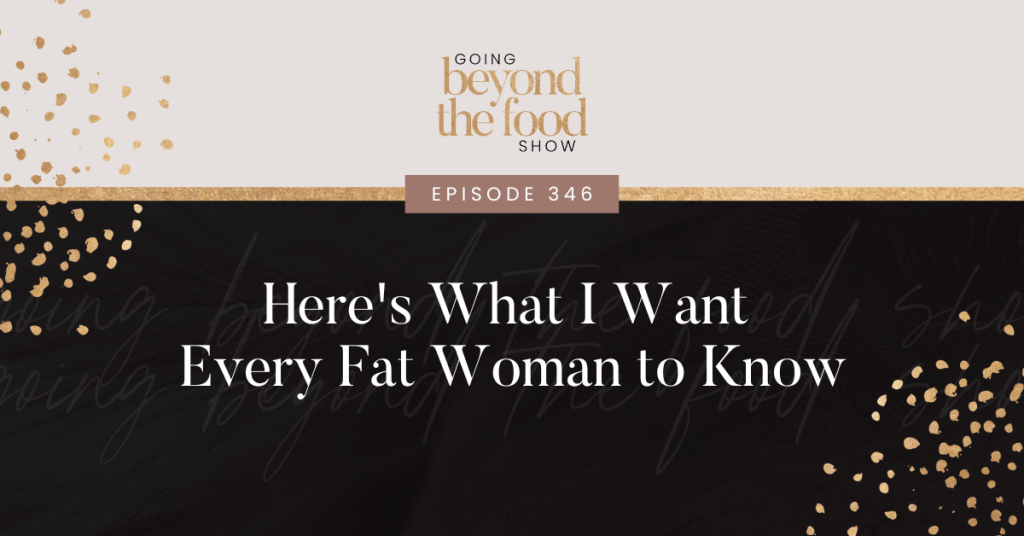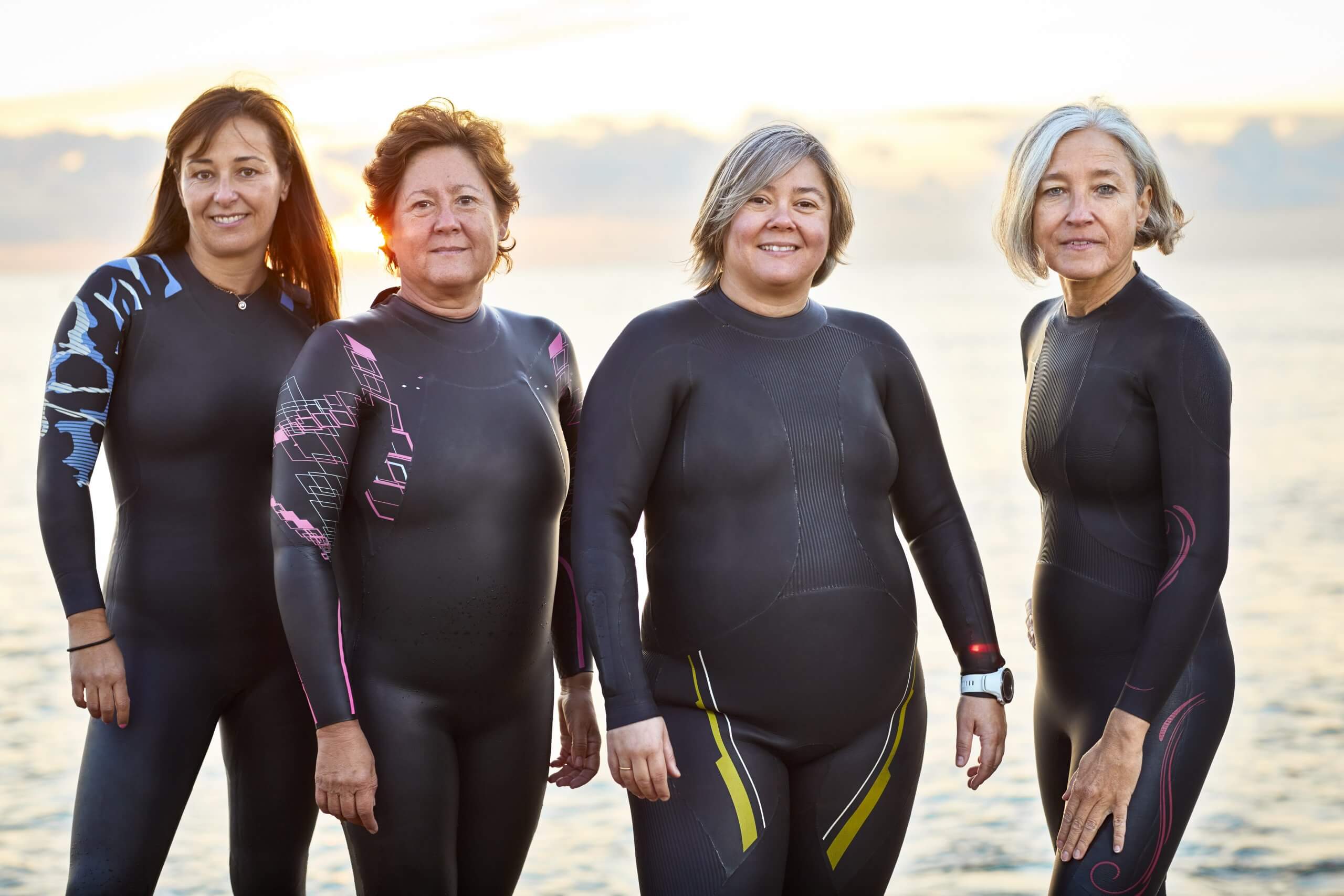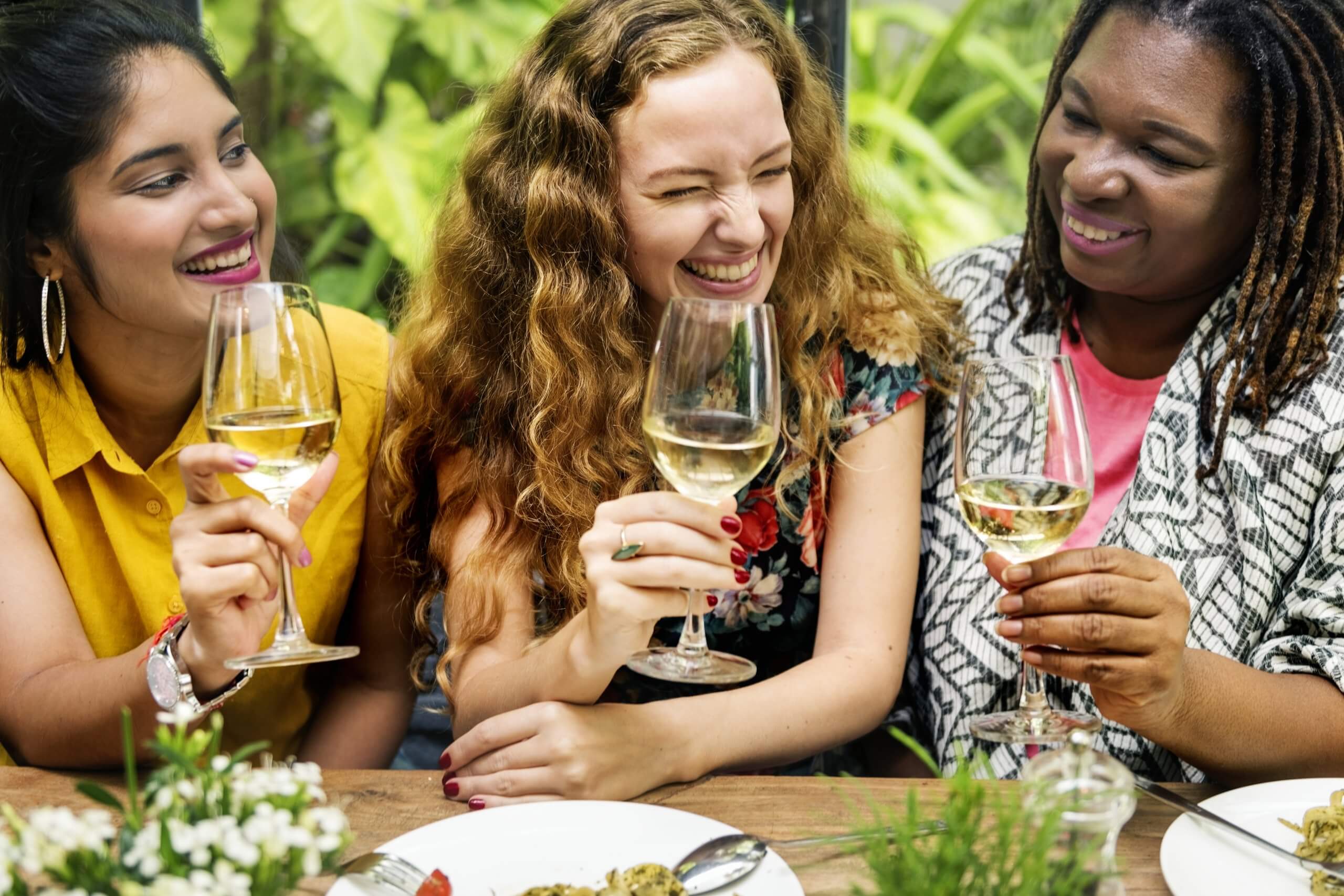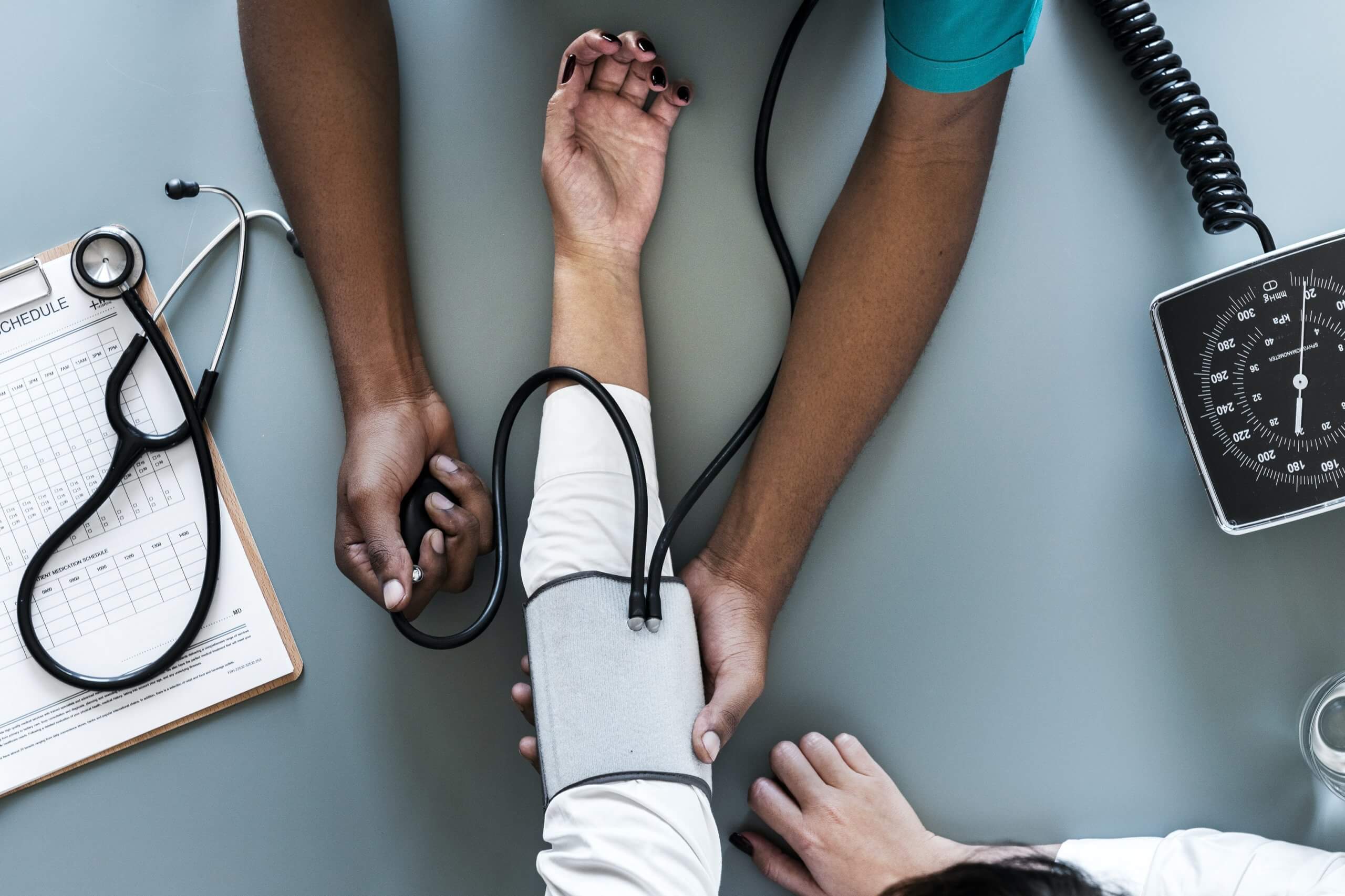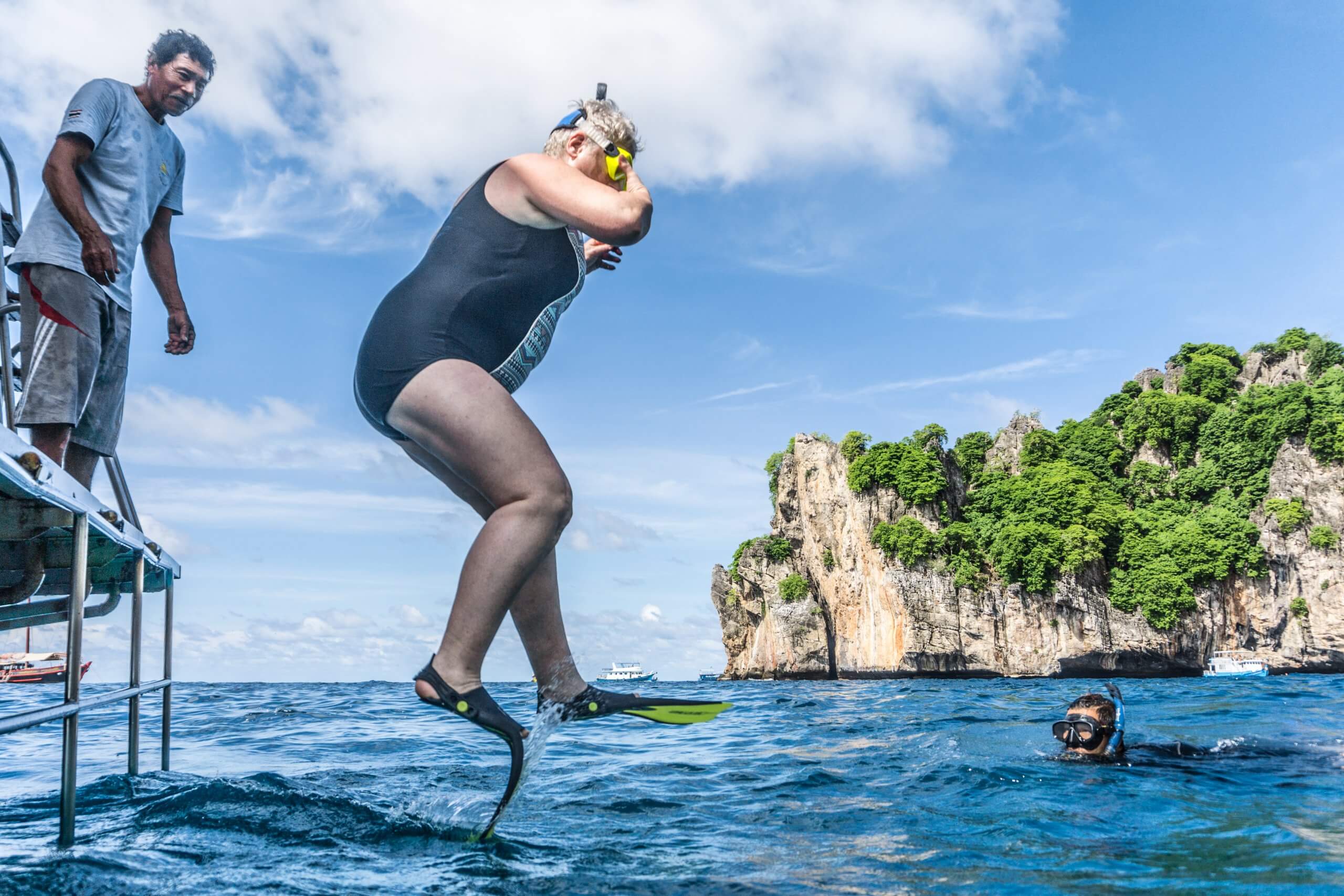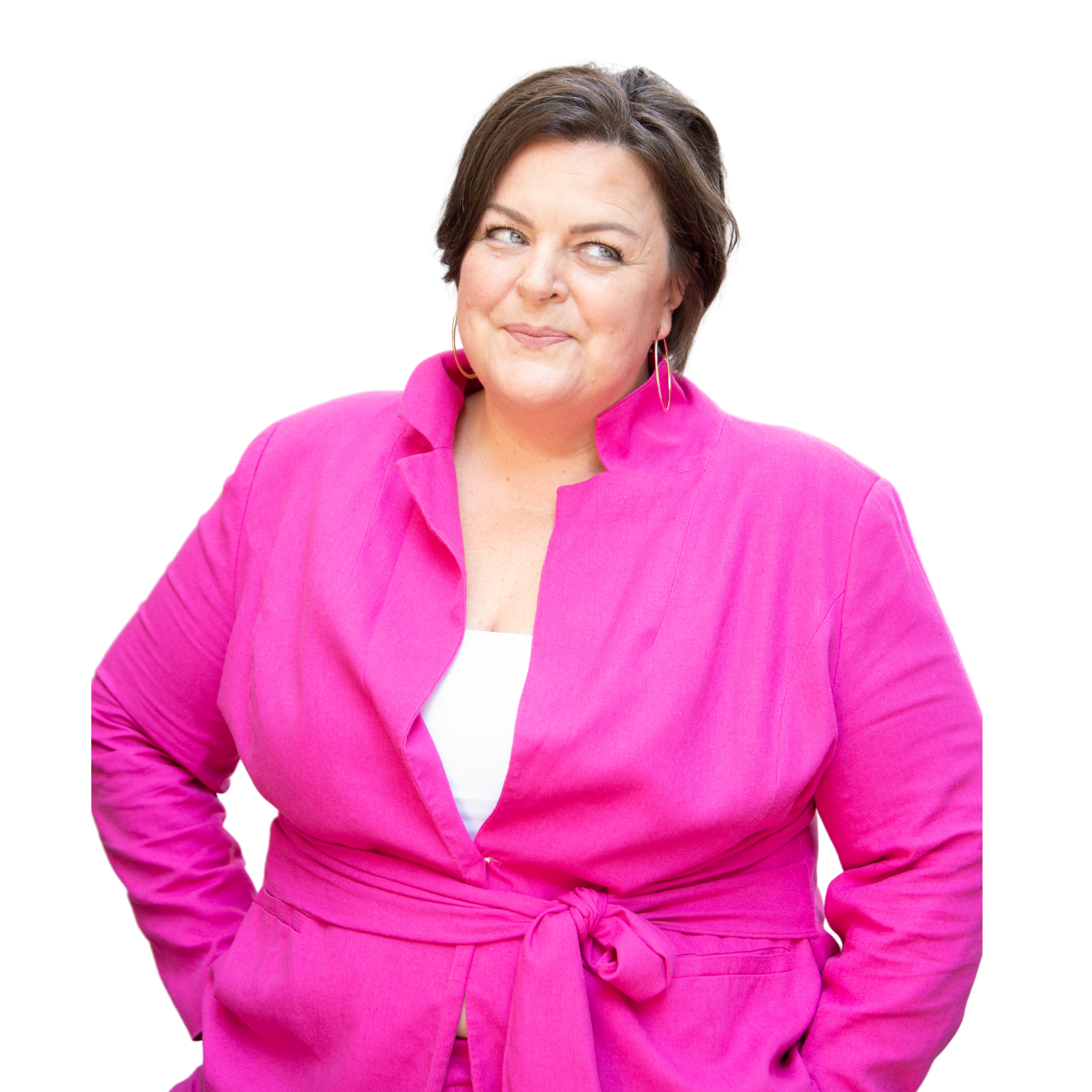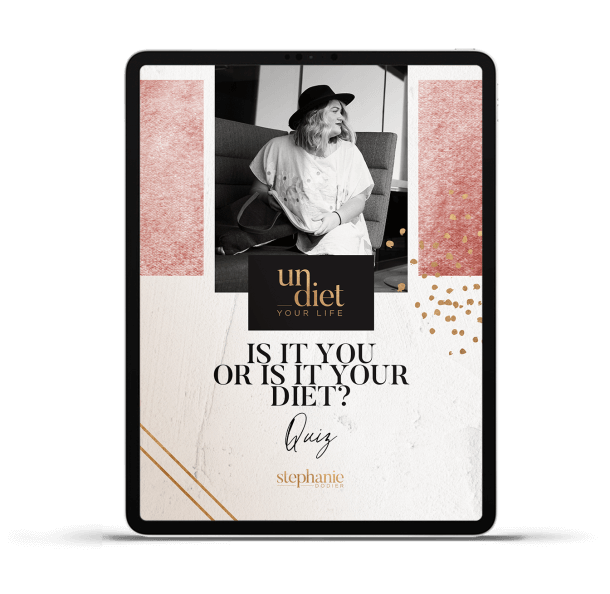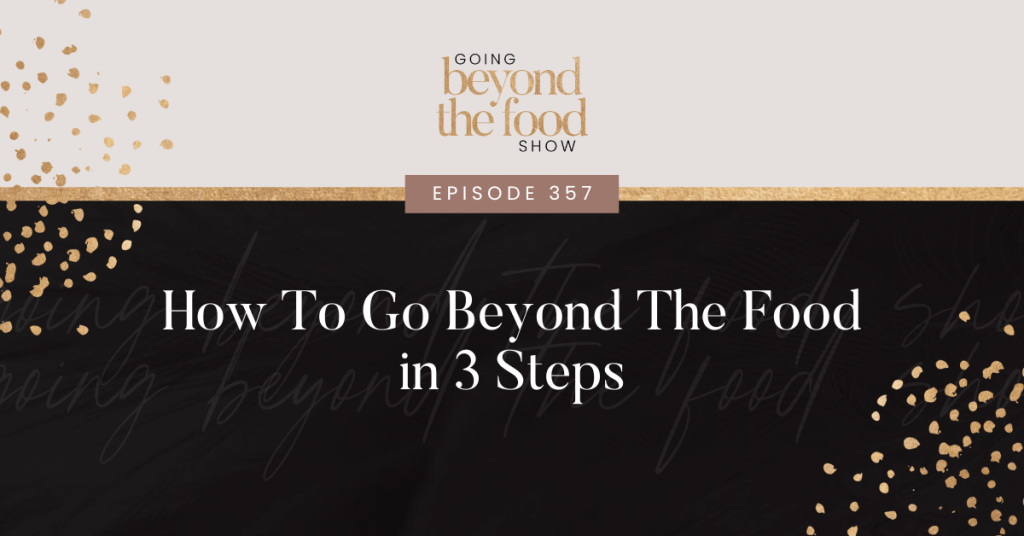
Food was never the problem. The size of our pants was never the problem either.
So why do we focus our healing approach on the actual food and body?
The reason why human experience struggles with food, health behaviors and their body isn’t because of a lack of intellectual knowledge or efforts.
it’s beyond the food, body or health habits.
How to Go Beyond The Food in 3 steps
In this episode, I’m going to be teaching you how to go beyond the food in 3 steps.
I’ll also be introducing you to the Going Beyond The Food Challenge and invite you to join us.
What you’ll learn listening to this episode on Going Beyond The Food In 3 Steps:
- How I created the 3 steps to go beyond the food
- The 3 steps of going beyond the food and change any behaviors with food and beyond food.
- How to take your learning about going beyond the food to the next level.
Mentioned in the show:
Going Beyond the Food Challenge
Non-Diet Coaching Certification
Transcript
Going Beyond The Food Show 357: How To Go Beyond The Food in 3 Steps
This is episode 357 of The Beyond the Food Show, and today I’m gonna teach you how to go beyond the food in Tree steps because it was never about the food or your body. Stay tuned.
Hello my sisters and welcome back to this episode. A little bit of context here. This episode is about teaching you how to go beyond the food in three steps, and I wanna set the tone to be really upfront with you. Going beyond the food is the name of my company. That’s the name from which I operate on Diet Your Life. It’s the name of where I host a non diet coaching certification. It’s my company. My company was name going beyond the food and I’m gonna give you the story behind that before I teach you how to go beyond the food in three steps.
I, as probably many of you know, I’m a clinical nutritionist. I’m classically trained in nutrition and upon graduation from school, I went in to open a nutrition clinic, the traditional model of helping people with nutrition, an office, local marketing, getting people locally to come and see the nutritionist. At an office, I had a secretary in six to seven hours a day, I was seeing patient one after the other, helping them with their nutrition. And I did that for three years, almost on the clock, in a clinical nutrition format. And very quickly within the first year, I kept, well, I observed a pattern probably within the first six, eight months, a pattern in presentation of my client and their nutrition struggle. And for another six month, I kept seeing the same pattern over and over and over again. And the pattern is that people were coming to me for nutrition challenges, but the reason that they were struggling with nutrition wasn’t because they didn’t know enough about food, which is what we were taught in school. We were taught that the solution to helping people eat better was to give them all the intellectual information we had a choir in our degree and like give them all the information and that is what’s gonna change our behavior around food.
And I did exactly what I was taught and then it didn’t work. Nine and a half people out of end, that didn’t work. And I presume that for the 0.5 person at Lieutenant at work, it’s because I didn’t see them long enough for me to realize it wasn’t working. And I remember vividly because it was a local business, I would go to community activity. I would see my client, the client had worked with, say a year ago, I would see them a year later, and then the first thing they would tell me after saying, Hey, Stephanie, was, I’m so ashamed. Everything you taught me, it didn’t work out. I wasn’t able to keep it up. I’m so bad. People would run away from me. Like I would see somebody locally and I would see them and then they would disappear because people were ashamed of not being able to keep up the healthy eating abbots, and I’m using Air quote alone in my office here that I had taught them. And there was this particular client, her name was Carolyn, and I will remember her for the rest of my life. It’s about a year and a half or so in practice. She walked in into my office and within a minute of entering my office and seeing me, she start bawling and crying, and she was so ashamed. Stephanie, I’ve been working with you for three months. I’m so ashamed I can’t do what you’re teaching me. I hide food in the car I eat on the way back from the grocery. I’m such a bad person. It was so profoundly affecting her like she was shaking because it was a form of trauma, which I didn’t know at the time, but she was, my relationship to her as a nutritionist and her trying to eat healthy was a traumatic experience. I was causing her, that’s trauma. Although at the time I didn’t have a name for it, but I knew something was wrong and that client propelled me into looking for an answer. And then what I realized a year and a half later, after all this research and encountering health at every size and intuitive eating, the answer was beyond the food.
And here we are today, 10 years later, me having now worked for eight years exclusively without the traditional approach nutrition by going beyond the food by addressing the real reason why people struggle with food. I have an entire framework and methodology behind that that I’ve been testing and testing and having amazing success with my clients with, and that’s what I wanna teach you today, how to go beyond the food.
Now, I’m gonna be upfront with you, this episode’s gonna be 20 minutes or so. I am not going to be able to teach you my life’s work in 20 minutes, but I have an opportunity, and offer, an invitation for you. I’m gonna teach you the basic today of going beyond the food in three steps, and I’m gonna offer you to come and study with me for a whole week. I’m hosting on May the 15th, 2023 to May 19th, 2023, a four day live training series where I am going to deep dive in each of the step during a whole hour. I’m gonna teach you more science behind it. I’m gonna teach you more in detail, the step and how to do it, and then I’m gonna answer question on each one of those steps. I’m inviting you to come and study with me for yourself or for you to work with other women now or in the future in learning how to go beyond the food. It’s called Going Beyond the Food Challenge. It’s a four day life training and get this. It’s only $37 for four hours of training with me, the workbooks, the recording for a whole three weeks. And the reason why I’m making it so affordable is because I want this information out into the world. Now I’m not making it free. A three because I want you and whoever’s gonna come to have a little bit of skin in the game to actually come to the training. Cuz we know if people are not live in the room, there’s very little chance for them to watch all the recording. Right? So I’m charging a small cost and I’m making it affordable at $37 in order for most of you to be able to come, and for those of you who are financially not capable at this time, to pay the $37, you can email [email protected] and we will help you. And remember, for those that are financially privileged to be able to pay the $37, every one of you that pay the price of entry, you are helping your sister out there who can’t manage the $37 in her life at this time. So this event’s gonna be live and I’m gonna be teaching for four days straight, and I’m gonna be be teaching this three step to go beyond the food.
So one thing that became very clear to me seven years ago, was that it was, the problem wasn’t food. The problem wasn’t the information or the lack thereof information around food that caused eating behavior. It wasn’t the size of the pants of my client or me either, because I had clients at all weight ranges, all struggling with their food behavior. But yet the only thing I knew to do was to actually give more information about food and give more information about the body and it actually was counterproductive. It was making people more overwhelmed and accentuate the behavior, but it was like a delay. They would change their behavior temporarily, and then they would have a bounce back that made their behavior even worse. And then I had to come to the conclusion that it was not about the food, it was beyond the food.
So if the food or the knowledge about the food isn’t what’s causing the behavior, then what is? And that is step one of going beyond the food is identifying the real problem that’s causing the, we’ll call it the distorted eating pattern or the distorted health habit pattern, or the distorted relationship to the body pattern, identify the real problem and address the real problem. And now we’re gonna do, in day one, we’re gonna teach you exactly what stands behind any behavioral pattern. Now, it took me two and a half years of training to like simplify it in the way I’m going to teach it to you. But let me tell you right now what it is. What’s standing behind any behavioral pattern in human, including food and body and health is the nervous system. The nervous system, which is your brain plus your spine and all the nerves in your body, literally the nervous system is what ignite our behavioral pattern. So what happens is your brain, what happen in your nervous system throughout your whole body is what’s gonna dictate what kind of behavioral pattern you’re gonna have. So what is that? It’s your emotion, right? Everything that happens in your spine and your nervous system, all the sensation in your body, some people may call it the fight or flight, the freeze. That’s the emotional response in your body from what happens in your brain, your thoughts, your belief that happens in the higher part of the nervous system, your brain. You have a thought, you have a belief that ignite in presence of the circumstance, in this case food, your belief about food create a thought, a judgment, an assessment around the food in front of you, and that trickles down in the rest of your body in an emotional response that then gets manifested into the world. It comes from your body into the world in a behavioral pattern. But it starts, the root cause is in your higher part of your nervous system, your brain, your thoughts, and your belief.
So in order for you to go beyond the food you need to identify the thought and or the belief that caused the emotional response that ignite the behavioral pattern. That’s step one. So put your finger on the thoughts and the belief or a collection of belief, the belief system, and then step two, then change that thought or that belief. Examine the thought in the belief and decide if you want to continue to think about food in that way, if you want to continue to believe that food should be approached this way, trying to be very global here. Have the authority to decide what you wanna think about food, and then change that thought or that belief. And then step three, as you are learning to believe a new thought about food, make it safe for you to have the emotional response that you’ve been used to having for a long time and make it safe for you to change that response and have another behavioral pattern.
So you need to unboard your nervous system. You need to create safety into your nervous system in order for you to change your behavioral pattern. And that’s the tree step, right? And when you do that, you are able to change your behavior around food, around health, around how you think and act towards your body on anything. Could be work habits, it could be career habits and business habits, you are able to change any behavioral pattern, any habits that you want in you understanding how behavioral patterns are created. That’s what I’m gonna teach you how to do. So on day one, we’re going to learn a framework for you to understand where to look as a real problem for the behavior you wanna change. And then two, how to change that belief system that thought, and how to bring safety to your nervous system to change your habit. And then on the fourth day, we talk about goals because here’s the thing, we foolishly think that diet culture, the system of belief that says to women you need to be thin in order to be valuable, that globally says to women you need to be anything else and you are right now, we think it only affects food and health and body image. But the truth, to be told, it affects every part of our life. And what I have found again, specifically over the last three years in helping women from a business and a career, like coaching at a goal level for career in business, is that we approach goals thinking it’s a sign of our worth if we achieve it, because that’s what DIA culture thought us us to do when we were dieting, right? The goal was to lose the weight so we can be worthy and we have that imprinted into our brain that achieving a goal is something, it’s life or death, and we have to do it and we have to be all in, and we have to use like willpower and self-discipline. And the goal is to achieve the goal. What if this wasn’t true? What if setting a goal had nothing to do with achieving the goal, but instead becoming the version of you who has the goal to think the thoughts and feel the emotion and have the habits. That was the reason why we set a goal.
So we’re gonna learn to think about goals globally differently. We’re gonna apply it to our behavior around food and body because that’s the topic, but know that you’re gonna come out of this knowing how to apply it to anything. So those are the four days we’re gonna spend together. I wanna remind you of the dates and where to go to join us if you wanna know more. Like I gave you the 15 minute version here, that’s good enough. You can do some Google searching and read some article on my stuff in my website and probably gonna be able to piece the information together. For $37, I’m gonna put it all together with you in a nice four hour training and a workbook. So May 16th, 17 and 18th, 2023, the live trainings are gonna be from 12:30 e s t to 1:30 PM. The recording will be available within three hours of the session ending. You’re gonna have a webpage where you’re gonna have all your recording in one place, Gonna get a workbook. So all the protocols I’m gonna give you, I’m gonna give you the weight piece protocol. I’m gonna give you the habit protocol. I’m going to give you how to change your thoughts, protocol. I’m gonna give you all the protocols that I use with my client in that workbook and all of it is for $37. You can go to the show notes of this podcast episode, or you can go to ww dot stephanie dozi eight.com/going beyond the food challenge. This four day life training, this challenge is open to anyone that is self-identified as a woman. You can be a beginner from leaving diet culture to a person that’s been out of diet culture for years, to a coach, to a therapist, to a dietician. We have dietician who we’re emailing me yesterday, want to join because they’re like me. They just graduated, one of them emailed me yesterday, she just graduated with a master’s degree, five years in university, and she was never taught how to coach behavior. So I told her to come to the training. This is gonna be people from all background. This is probably going to be one of the most powerful life training that I will have had the pleasure to put together. We’ll see after the event, but I think it’s gonna be extremely powerful because I’m gonna show you the framework that changes it all, like the formula to apply it to anything.
So I’m inviting you. I would love for you to be with me in that event. If not, you’ve got the tree step here on how to go beyond the phone, and I think you’ve got a good base. You can start practicing on your own. And if you listen to the podcast, hours and hours of them, you’re probably gonna piece all the other information. If not, commence spend that whole week together with me in May, and I’m gonna knock your socks off. I guarantee that I’m gonna knock your socks off by Thursday, when you leave the training session, I’m gonna blow your mind guaranteed. With that in mind, I probably, you can feel the energy that I have behind that, I can’t wait to have you with me in those trainings, and I love you, my sister, and I’ll see you on the next podcast.
Going Beyond The Food Show 357: Going Beyond The Food In 3 Steps
This is episode 357 of The Beyond the Food Show, and today I’m gonna teach you how to go beyond the food in Tree steps because it was never about the food or your body. Stay tuned.
Hello my sisters and welcome back to this episode. A little bit of context here. This episode is about teaching you how to go beyond the food in three steps, and I wanna set the tone to be really upfront with you. Going beyond the food is the name of my company. That’s the name from which I operate on Diet Your Life. It’s the name of where I host a non diet coaching certification. It’s my company. My company was name going beyond the food and I’m gonna give you the story behind that before I teach you how to go beyond the food in three steps.
I, as probably many of you know, I’m a clinical nutritionist. I’m classically trained in nutrition and upon graduation from school, I went in to open a nutrition clinic, the traditional model of helping people with nutrition, an office, local marketing, getting people locally to come and see the nutritionist. At an office, I had a secretary in six to seven hours a day, I was seeing patient one after the other, helping them with their nutrition. And I did that for three years, almost on the clock, in a clinical nutrition format. And very quickly within the first year, I kept, well, I observed a pattern probably within the first six, eight months, a pattern in presentation of my client and their nutrition struggle. And for another six month, I kept seeing the same pattern over and over and over again. And the pattern is that people were coming to me for nutrition challenges, but the reason that they were struggling with nutrition wasn’t because they didn’t know enough about food, which is what we were taught in school. We were taught that the solution to helping people eat better was to give them all the intellectual information we had a choir in our degree and like give them all the information and that is what’s gonna change our behavior around food.
And I did exactly what I was taught and then it didn’t work. Nine and a half people out of end, that didn’t work. And I presume that for the 0.5 person at Lieutenant at work, it’s because I didn’t see them long enough for me to realize it wasn’t working. And I remember vividly because it was a local business, I would go to community activity. I would see my client, the client had worked with, say a year ago, I would see them a year later, and then the first thing they would tell me after saying, Hey, Stephanie, was, I’m so ashamed. Everything you taught me, it didn’t work out. I wasn’t able to keep it up. I’m so bad. People would run away from me. Like I would see somebody locally and I would see them and then they would disappear because people were ashamed of not being able to keep up the healthy eating abbots, and I’m using Air quote alone in my office here that I had taught them. And there was this particular client, her name was Carolyn, and I will remember her for the rest of my life. It’s about a year and a half or so in practice. She walked in into my office and within a minute of entering my office and seeing me, she start bawling and crying, and she was so ashamed. Stephanie, I’ve been working with you for three months. I’m so ashamed I can’t do what you’re teaching me. I hide food in the car I eat on the way back from the grocery. I’m such a bad person. It was so profoundly affecting her like she was shaking because it was a form of trauma, which I didn’t know at the time, but she was, my relationship to her as a nutritionist and her trying to eat healthy was a traumatic experience. I was causing her, that’s trauma. Although at the time I didn’t have a name for it, but I knew something was wrong and that client propelled me into looking for an answer. And then what I realized a year and a half later, after all this research and encountering health at every size and intuitive eating, the answer was beyond the food.
And here we are today, 10 years later, me having now worked for eight years exclusively without the traditional approach nutrition by going beyond the food by addressing the real reason why people struggle with food. I have an entire framework and methodology behind that that I’ve been testing and testing and having amazing success with my clients with, and that’s what I wanna teach you today, how to go beyond the food.
Now, I’m gonna be upfront with you, this episode’s gonna be 20 minutes or so. I am not going to be able to teach you my life’s work in 20 minutes, but I have an opportunity, and offer, an invitation for you. I’m gonna teach you the basic today of going beyond the food in three steps, and I’m gonna offer you to come and study with me for a whole week. I’m hosting on May the 15th, 2023 to May 19th, 2023, a four day live training series where I am going to deep dive in each of the step during a whole hour. I’m gonna teach you more science behind it. I’m gonna teach you more in detail, the step and how to do it, and then I’m gonna answer question on each one of those steps. I’m inviting you to come and study with me for yourself or for you to work with other women now or in the future in learning how to go beyond the food. It’s called Going Beyond the Food Challenge. It’s a four day life training and get this. It’s only $37 for four hours of training with me, the workbooks, the recording for a whole three weeks. And the reason why I’m making it so affordable is because I want this information out into the world. Now I’m not making it free. A three because I want you and whoever’s gonna come to have a little bit of skin in the game to actually come to the training. Cuz we know if people are not live in the room, there’s very little chance for them to watch all the recording. Right? So I’m charging a small cost and I’m making it affordable at $37 in order for most of you to be able to come, and for those of you who are financially not capable at this time, to pay the $37, you can email [email protected] and we will help you. And remember, for those that are financially privileged to be able to pay the $37, every one of you that pay the price of entry, you are helping your sister out there who can’t manage the $37 in her life at this time. So this event’s gonna be live and I’m gonna be teaching for four days straight, and I’m gonna be be teaching this three step to go beyond the food.
So one thing that became very clear to me seven years ago, was that it was, the problem wasn’t food. The problem wasn’t the information or the lack thereof information around food that caused eating behavior. It wasn’t the size of the pants of my client or me either, because I had clients at all weight ranges, all struggling with their food behavior. But yet the only thing I knew to do was to actually give more information about food and give more information about the body and it actually was counterproductive. It was making people more overwhelmed and accentuate the behavior, but it was like a delay. They would change their behavior temporarily, and then they would have a bounce back that made their behavior even worse. And then I had to come to the conclusion that it was not about the food, it was beyond the food.
So if the food or the knowledge about the food isn’t what’s causing the behavior, then what is? And that is step one of going beyond the food is identifying the real problem that’s causing the, we’ll call it the distorted eating pattern or the distorted health habit pattern, or the distorted relationship to the body pattern, identify the real problem and address the real problem. And now we’re gonna do, in day one, we’re gonna teach you exactly what stands behind any behavioral pattern. Now, it took me two and a half years of training to like simplify it in the way I’m going to teach it to you. But let me tell you right now what it is. What’s standing behind any behavioral pattern in human, including food and body and health is the nervous system. The nervous system, which is your brain plus your spine and all the nerves in your body, literally the nervous system is what ignite our behavioral pattern. So what happens is your brain, what happen in your nervous system throughout your whole body is what’s gonna dictate what kind of behavioral pattern you’re gonna have. So what is that? It’s your emotion, right? Everything that happens in your spine and your nervous system, all the sensation in your body, some people may call it the fight or flight, the freeze. That’s the emotional response in your body from what happens in your brain, your thoughts, your belief that happens in the higher part of the nervous system, your brain. You have a thought, you have a belief that ignite in presence of the circumstance, in this case food, your belief about food create a thought, a judgment, an assessment around the food in front of you, and that trickles down in the rest of your body in an emotional response that then gets manifested into the world. It comes from your body into the world in a behavioral pattern. But it starts, the root cause is in your higher part of your nervous system, your brain, your thoughts, and your belief.
So in order for you to go beyond the food you need to identify the thought and or the belief that caused the emotional response that ignite the behavioral pattern. That’s step one. So put your finger on the thoughts and the belief or a collection of belief, the belief system, and then step two, then change that thought or that belief. Examine the thought in the belief and decide if you want to continue to think about food in that way, if you want to continue to believe that food should be approached this way, trying to be very global here. Have the authority to decide what you wanna think about food, and then change that thought or that belief. And then step three, as you are learning to believe a new thought about food, make it safe for you to have the emotional response that you’ve been used to having for a long time and make it safe for you to change that response and have another behavioral pattern.
So you need to unboard your nervous system. You need to create safety into your nervous system in order for you to change your behavioral pattern. And that’s the tree step, right? And when you do that, you are able to change your behavior around food, around health, around how you think and act towards your body on anything. Could be work habits, it could be career habits and business habits, you are able to change any behavioral pattern, any habits that you want in you understanding how behavioral patterns are created. That’s what I’m gonna teach you how to do. So on day one, we’re going to learn a framework for you to understand where to look as a real problem for the behavior you wanna change. And then two, how to change that belief system that thought, and how to bring safety to your nervous system to change your habit. And then on the fourth day, we talk about goals because here’s the thing, we foolishly think that diet culture, the system of belief that says to women you need to be thin in order to be valuable, that globally says to women you need to be anything else and you are right now, we think it only affects food and health and body image. But the truth, to be told, it affects every part of our life. And what I have found again, specifically over the last three years in helping women from a business and a career, like coaching at a goal level for career in business, is that we approach goals thinking it’s a sign of our worth if we achieve it, because that’s what DIA culture thought us us to do when we were dieting, right? The goal was to lose the weight so we can be worthy and we have that imprinted into our brain that achieving a goal is something, it’s life or death, and we have to do it and we have to be all in, and we have to use like willpower and self-discipline. And the goal is to achieve the goal. What if this wasn’t true? What if setting a goal had nothing to do with achieving the goal, but instead becoming the version of you who has the goal to think the thoughts and feel the emotion and have the habits. That was the reason why we set a goal.
So we’re gonna learn to think about goals globally differently. We’re gonna apply it to our behavior around food and body because that’s the topic, but know that you’re gonna come out of this knowing how to apply it to anything. So those are the four days we’re gonna spend together. I wanna remind you of the dates and where to go to join us if you wanna know more. Like I gave you the 15 minute version here, that’s good enough. You can do some Google searching and read some article on my stuff in my website and probably gonna be able to piece the information together. For $37, I’m gonna put it all together with you in a nice four hour training and a workbook. So May 16th, 17 and 18th, 2023, the live trainings are gonna be from 12:30 e s t to 1:30 PM. The recording will be available within three hours of the session ending. You’re gonna have a webpage where you’re gonna have all your recording in one place, Gonna get a workbook. So all the protocols I’m gonna give you, I’m gonna give you the weight piece protocol. I’m gonna give you the habit protocol and how to change your thoughts, protocol. I’m gonna give you all the protocols that I use with my client in that workbook and all of it is for $37. You can go to the show notes of this podcast episode, or you can go to www.stephaniedodier.com/going-beyond-the-food-challenge. This four day life training, this challenge is open to anyone that is self-identified as a woman. You can be a beginner from leaving diet culture to a person that’s been out of diet culture for years, to a coach, to a therapist, to a dietician. We have dietician who we’re emailing me yesterday, want to join because they’re like me. They just graduated, one of them emailed me yesterday, she just graduated with a master’s degree, five years in university, and she was never taught how to coach behavior. So I told her to come to the training. This is gonna be people from all background. This is probably going to be one of the most powerful life training that I will have had the pleasure to put together. We’ll see after the event, but I think it’s gonna be extremely powerful because I’m gonna show you the framework that changes it all, like the formula to apply it to anything.
So I’m inviting you. I would love for you to be with me in that event. If not, you’ve got the tree step here on how to go beyond the phone, and I think you’ve got a good base. You can start practicing on your own. And if you listen to the podcast, hours and hours of them, you’re probably gonna piece all the other information. If not, commence spend that whole week together with me in May, and I’m gonna knock your socks off. I guarantee that I’m gonna knock your socks off by Thursday, when you leave the training session, I’m gonna blow your mind guaranteed. With that in mind, I probably, you can feel the energy that I have behind that, I can’t wait to have you with me in those trainings, and I love you, my sister, and I’ll see you on the next podcast.
